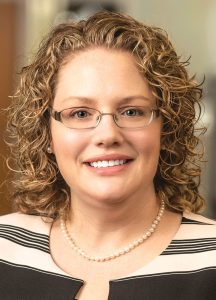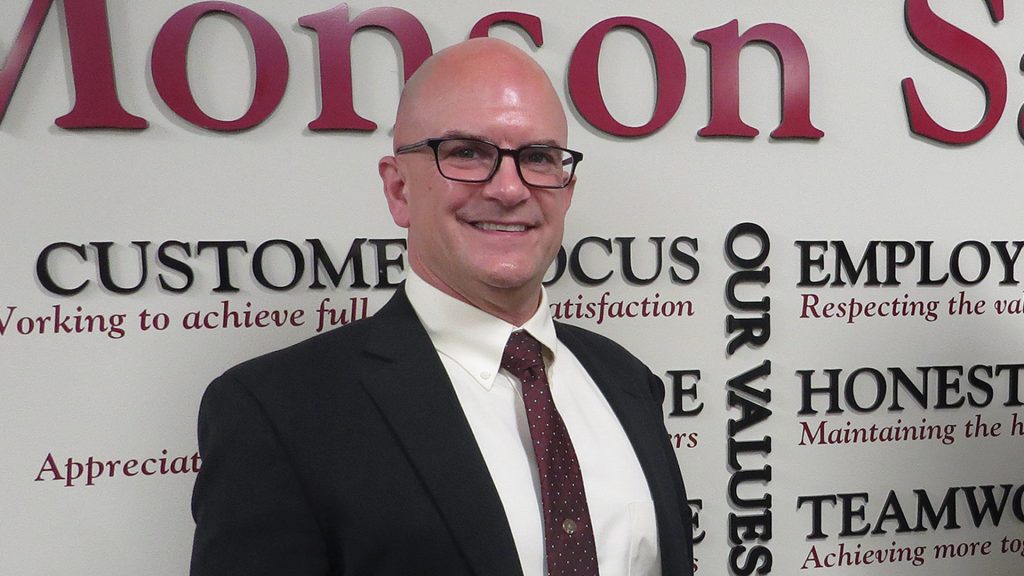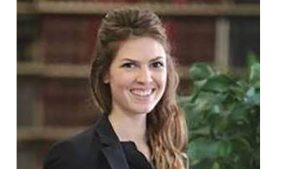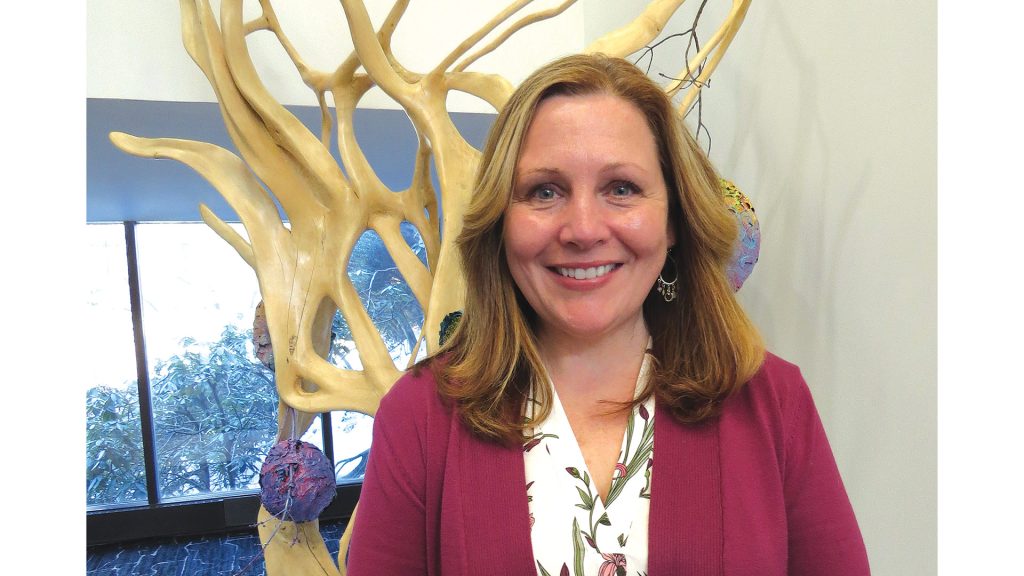The Great Return

Chris Viale, president and CEO of Cambridge Credit Counseling
Over the past year or so, most companies have set — and then pushed back — the date when workers would return to the offices they left when COVID-19 arrived in March 2020. Now, such a return seems more real. But what’s also real is a commitment to flexibility among area employers, who recognize not only that employees can work effectively from home, but that hybrid, or fully remote, work schedules are becoming ever-more critical when it comes to attracting and retaining a workforce.
There was the Great Depression. And 75 years later, there was the Great Recession. We’re still struggling with what’s being called the Great Resignation, and now … we have what some are referring to as the Great Return.
This would be the return to the office of all those workers — tens of millions of them — who went home to work right around this time two years ago. Some have already returned, but many haven’t. There have been several scheduled returns over the past two years — indeed, most major corporations have moved back their return dates several times due to surges and new variants — but this time, by most all accounts, it seems real. Very real.
And it also seems complicated, or at least far different than most would have thought a return would look like two years ago.
That’s because the world of work has changed in a profound way, with the matter put in its proper perspective by Kristin Morales-Lemieux, senior vice president and chief Human Resources officer at Baystate Health.
“When we first sent everyone home, no one wanted to be there,” she said, adding that roughly 4,000 of the system’s employees were told to work remotely, if they could. “And for the first six months, we spent all of our time trying to hold back the tide of employees and managers who wanted to come back into the building, and, quite frankly, walking around and finding people who should not be there and shooing them back home again.
“As our employees come back together, our goal is to combine the flexibility and convenience we’ve had working remotely with the energy, connection, and collaboration that comes from being together in person.”
“But somewhere around that six-month mark …. there was a shift, and people starting saying, ‘I don’t want to go back,’ or ‘I certainly don’t want to go back full-time,’” she went on. “And in a few areas where we started to transition departments back, we started to notice that, not in large numbers, but here and there, we began losing people who were taking jobs with other organizations that allowed them to work remotely full-time.”

When they first went home, Kristin Morales-Lemieux says, employees were clamoring to come back to the office; six months later, most no longer wanted to.
This phenomenon explains why ‘flexibility’ is the watchword as the Great Return commences, and why the hybrid schedule — whereby people work in the office at least a few days of the week and remotely for the remainder — is becoming the norm among employers, and, increasingly, expected when it comes to employees.
At Monson Savings Bank, employees now have a number of options when it comes to working schedules, including a hybrid model that has them in the office at least two days a week, and a four-day work week. MSB President Dan Moriarty said such flexibility, at a time when most have proven they can work effectively from home, is a practical response to the changing work climate.
“We wanted to create some culture for retention for existing employees,” he said, echoing the thoughts of many we spoke with. “And as we compete against other companies in this region, but also well outside, that offer flexibility and remote working, we thought it was a good balance — for the organization and the employee.”
Meanwhile, MassMutual has put in place what it calls a “flexible workplace approach” that is comprised of three work arrangements — full-time in the office, full-time remote, and a hybrid of the two, with the majority of the financial-services giant’s employees working a hybrid arrangement.
“Flexibility is at the heart of our approach,” said Sue Cicco, head of Human Resources and Employee Experience for the company. “As our employees come back together, our goal is to combine the flexibility and convenience we’ve had working remotely with the energy, connection, and collaboration that comes from being together in person.”
Elaborating, she said the flexible-workplace approach has been in place since last summer with employees “testing” it over the past several months. They are now being asked to be at “a more regular cadence” by the beginning of April.
At Cambridge Credit Counseling, Chris Viale, president and CEO of the company, plans to bring employees back to work a hybrid schedule starting later this month. But the longer-term plan is to bring most employees back five days a week, he told BusinessWest, adding that he’s expecting some pushback, will listen to those giving it, and may ultimately change his mind.
“If people thought the labor market was tight going into COVID, we haven’t seen anything yet.”
But for now, that’s the plan, and for reasons that would resonate with many employers across the region.
“We’ve been grappling with this for quite some time,” Viale explained. “Right before the pandemic, we secured a much larger office space with a state-of-the-art call-center environment, and we committed to a seven-year lease, so we have that financial expense baked in to trying to do what’s right for everyone, trying to make sure the company is functioning as we need it to, trying to make sure we’re serving the consumers we’re serving, and meeting the needs of our staff. We’re trying to balance all that — somehow.”
Overall, there are many forces driving the flexibility being exhibited at most workplaces, but perhaps the most significant is common sense when it comes to the matter of attracting and retaining talent, especially at a time when businesses in virtually sector are struggling to do so.

Dan Moriarty says Monson Savings Bank is focusing on flexibility with its return-to-the-workplace strategies, including hybrid schedules and the option of a four-day work week.
Morales-Lemieux noted that Baystate Health, which regularly employs roughly 13,000 employees, currently has about 1,900 vacancies, three times what might be considered normal and a powerful motivating force when it comes to establishing return-to-the-workplace strategies.
“If people thought the labor market was tight going into COVID,” she said, “we haven’t seen anything yet.”
Work in Progress
It’s called ‘Corporate Tuesday.’
That’s the name Monson Savings Bank has attached to the second day of the work week, a day when most, if not all, employees will be in the office, said Moriarty, adding that this is the day, considered better than Monday, or any other day, for that matter, when people would schedule in-person meetings, department meetings, and collaborations.
“The parking lot is pretty full,” he explained, adding that Corporate Tuesday has been in effect since Jan. 1, and has thus far been greeted with a generally positive response.
Beyond Corporate Tuesday and some similar initiatives, there is now unprecedented amounts of flexibility when it comes to work and work schedules, at companies both large and small, a new landscape that has been years (and not just the past two years) in the making.
Indeed, Morales-Lemieux echoed others when she said there was some movement in this direction before the pandemic, especially as the unemployment rate dropped and it became steadily more challenging to attract and retain talent.

Sarah Morgan says employees at Health New England have shown they can be effective working remotely.
“Even pre-COVID, we were really starting to feel the pressure to move into a variety of more flexible work arrangements, even as it relates to our frontline workers,” she told BusinessWest. “As the unemployment rate had dropped over the past decade, coupled with our own unique challenges in Western Massachusetts, such as our aging population and the number of healthcare-related — and non-healthcare-related — companies that we compete with for workers, we had, in the year prior to the pandemic, been talking in earnest about how we needed to change in order to make sure that we could keep a workforce.”
Elaborating, she said this talk involved, among other things, remote-work scenarios not only for attractive job candidates from other states who do not wish to relocate to Massachusetts, but also candidates and existing employees already in the 413.
Suffice it to say the pandemic has served to open more eyes to this need to change and add several layers of urgency to the matter, despite the delayed nature of the return to work.
But change comes hard to many companies, said Meredith Wise, president and CEO of the Employers Assoc. of the NorthEast, noting that, in this case, most employers she’s talked with have seen the wisdom of embracing flexibility and not trying to put in place a one-size — or one-schedule, to be more precise — fits-all policy or strategy.
Indeed, even most old-school managers who would certainly prefer to have everyone back in the office eight hours a day, five days a week, are recognizing the need to embrace the changing landscape and not fight it — for a number of very practical reasons, especially those workforce issues, she said.
“We’re advising people to be flexible and talk with employees about what’s going to work for them. And one of the big reasons why is the retention problem that most employers are facing right now.”
“We’re advising people to be flexible and talk with employees about what’s going to work for them,” she explained. “And one of the big reasons why is the retention problem that most employers are facing right now; there are enough employers that are offering hybrid arrangements that you could easily lose people if you put your foot down and say, ‘I need you here five days a week.’ Those workers can easily find someone who will be flexible and more accommodating.”
Balance Sheet
Those we spoke with said there have been a number of fits and starts when it comes to returning employees to the workplace. Most were ready to start the process last spring or last fall, but Delta and then Omicron ultimately pushed back those timetables.
Now, most are looking at later this month or early next month as a return date, although it appears the vast majority of workers will still be working remotely at least a few days a week.
At Health New England, Sarah Morgan, director of Human Resources and Organizational Development, said all but a handful of the company’s 385 employees are currently working remotely, and there is no set date for a return. As for a plan, it involves being flexible, giving employees an opportunity to “volunteer” to return if they should desire to do so and if the conditions with regard to the pandemic warrant such a return.
For many reasons, she said, returning everyone to the office full-time — essentially turning back the clock to early March 2020 — is not practical. For starters, even with COVID subsiding in many respects, the company is no rush for a return to pre-pandemic density levels in its office space in Monarch Place. But over the past two years, employees have shown they can effectively work remotely, she went on, which more than justifies flexible or hybrid work schedules.
“Our associates have proven that they’re capable of working remotely for quite some time; they’re meeting the standards and expectations and doing very, very well,” she told BusinessWest. “They’re meeting all the needs of our members, and so we’ve said that people like to work at home, we understand that, and we’re going to enable a certain amount of flexibility within teams and a hybrid approach.”
Like others, she said such flexibility is becoming ever-more critical when it comes to attracting and retaining employees, but also widening the pool of talent to include those from other regions of the country.
“We recognize that flexibility around remote work and hybrid work schedules is a way to honor the needs of people,” she said, using that word ‘needs’ in reference to everything from family matters to physical disabilities. “We’re seeing more people ask for that flexibility when they apply.”
And at the Harold Grinspoon Foundation, which employs roughly 150 people, 100 at the Agawam Corporate Center, there will be similar amounts of flexibility, said Jennifer Murphy, director of Human Resources, adding that the employees now working remotely, and that’s most of them, are slated to return in a hybrid format on April 4.
“Part of our new flexible-work policy involves a hybrid work model; when we return, people will be required to work 60% of the time in the office,” Murphy said, adding that this plan of action has been generally well-received by employees. Overall, it represents acknowledgement of both the emergence of remote work as being popular and effective and the importance of face-to-face interaction when it comes to office culture.
“What COVID has taught us is that, given the nature of our work, we can operate our business successfully remotely,” she explained. “But we also feel it’s important for our culture that we work together and collaborate together; there’s real value in those face-to-face interactions. Overall, we’re trying to balance the value and importance of in-person work and collaboration with employees’ desire to also have that flexibility to work remotely.”

Jennifer Murphy says the 100 employees working at the offices of the Harold Grinspoon Foundation will be returning on April 4 and working hybrid schedules.
At Cambridge Credit Counseling, Viale said his plan to bring employees back to a hybrid schedule was greeted with a generally positive response. Overall, he’s not expecting the same when it comes to his plans to bring all or most employees (there will be exceptions for health considerations and other factors) back full-time.
Elaborating, and echoing Morales-Lemieux’s comments, he said that, as the months went by, employees became increasingly comfortable with working remotely, and increasingly uncomfortable with the thought of returning to the office.
But after weighing all the factors, including that seven-year lease on a significantly larger footprint and other considerations, he decided that bringing everyone back is the best course. But, as noted earlier, he will listen, and he may be open to changing his plans.
And what may be a deciding factor in his ultimate decision is his ability to maintain his workforce.
“What’s really challenging is just finding people to work,” he said. “I just heard an ad coming in to work this morning that Target is hiring people for $24 an hour; our starting wage is between $16 and $18 an hour.”
At Ware-based Country Bank, most all employees have been back to the office since last fall, said Miriam Siegel, first senior vice president and chief culture officer for the institution, adding that she believes that the bank is among the first, if not the first, business of its kind to put a flexible work policy in place.
The employees who have returned are working three days in the office and two remotely, she said, adding that the new policy, or strategy, is not the result of COVID, necessarily, but rather recognition that times and needs are changing, and flexible schedules are the logical, responsible response to the current landscape.
“One of the big things we’ve learned at the bank is that we have to recognize that we don’t live in a one-size-fits-all working world anymore,” she said. “That has become our mantra in many ways.”
Elaborating, she said the pandemic helped drive home the need to communicate with employees, have them articulate their challenges and needs, and then work with them to the extent possible to accommodate those needs.
“What COVID has taught us is that, given the nature of our work, we can operate our business successfully remotely. But we also feel it’s important for our culture that we work together and collaborate together; there’s real value in those face-to-face interactions.”
This is the right thing to do, Siegel said, but it’s also what many companies are willing to do, which is critical during what could only be called an ongoing workforce crisis.
“When you couple this remote-work situation with the Great Resignation, shifting priorities, and our challenge to retain people … we need to be listening to our employees and accommodate them when we can,” she said. “Because they’ll very quickly go somewhere else right now.”
At Baystate, as Morales-Lemieux noted, efforts to bring back — to the extent they are coming back — those 4,000 employees who left for home two years ago have been underway for some time.
There is now an organization-wide communication plan and strategy that will be launched in early April, she said, adding that there are still 3,000 people working “completely or largely” remotely.
Bottom Line
At all the workplaces we talked with, the new policies and strategies are in place for what would be called the time being.
Indeed, each company said it reserved to right to re-evaluate and change what is in place, depending on how things work out.
“The program we put in place — we keep the option open to revise or revoke if we don’t see good results,” Moriarty said. “But so far, so good.”
Murphy concurred. “When we initiated this policy and rolled it out, we said we would try it for one year and see how it works, and that we reserve the right to revisit it,” she said, adding that, while there is general confidence that this strategy will succeed given what’s happened over the past two years, it is still, on some levels, an experiment.
But overall, she’s not expecting many changes to the new policies — or to the current landscape in the workplace, for that matter.
“Maybe I’m wrong, but I don’t see the trend turning back to fully in-person work for most people, especially those who work at a computer all day,” she said. “We’ve shown that that the remote model works; I think it’s here to stay.”
Morgan agreed. “We’re trending in that direction; HR professionals are talking about the trends, and the ‘new normal,’ and what will be the future of work,” she explained. “For so many reasons, we’re engaging in work in a different way; we’re fitting it into our lives in a different way than we could if we had a 30-minute commute to the office — and we’re finding that we can be even more productive.”
Those sentiments are among the many that make it clear that work has changed over the past two years — and probably changed forever.
And this will make the much-anticipated Great Return something to watch.
George O’Brien can be reached at [email protected]
















